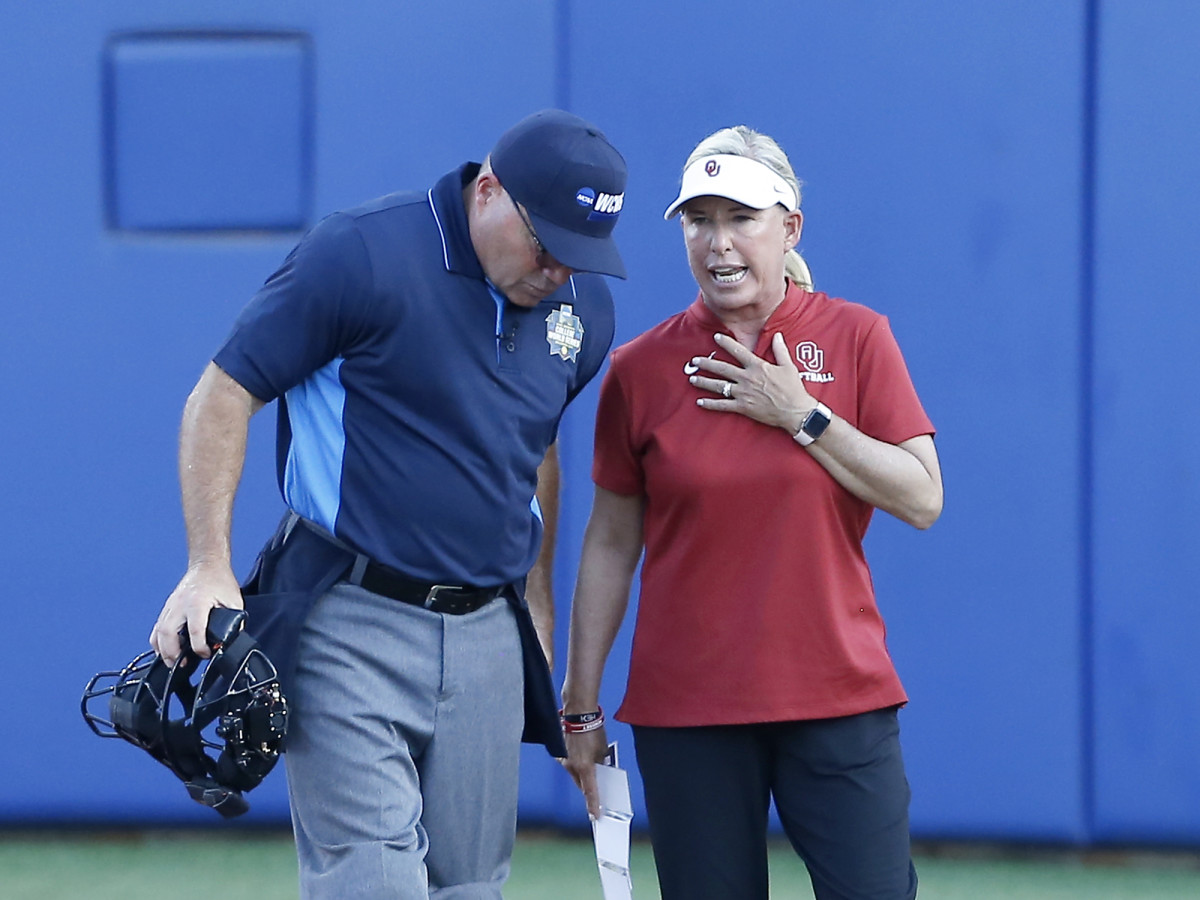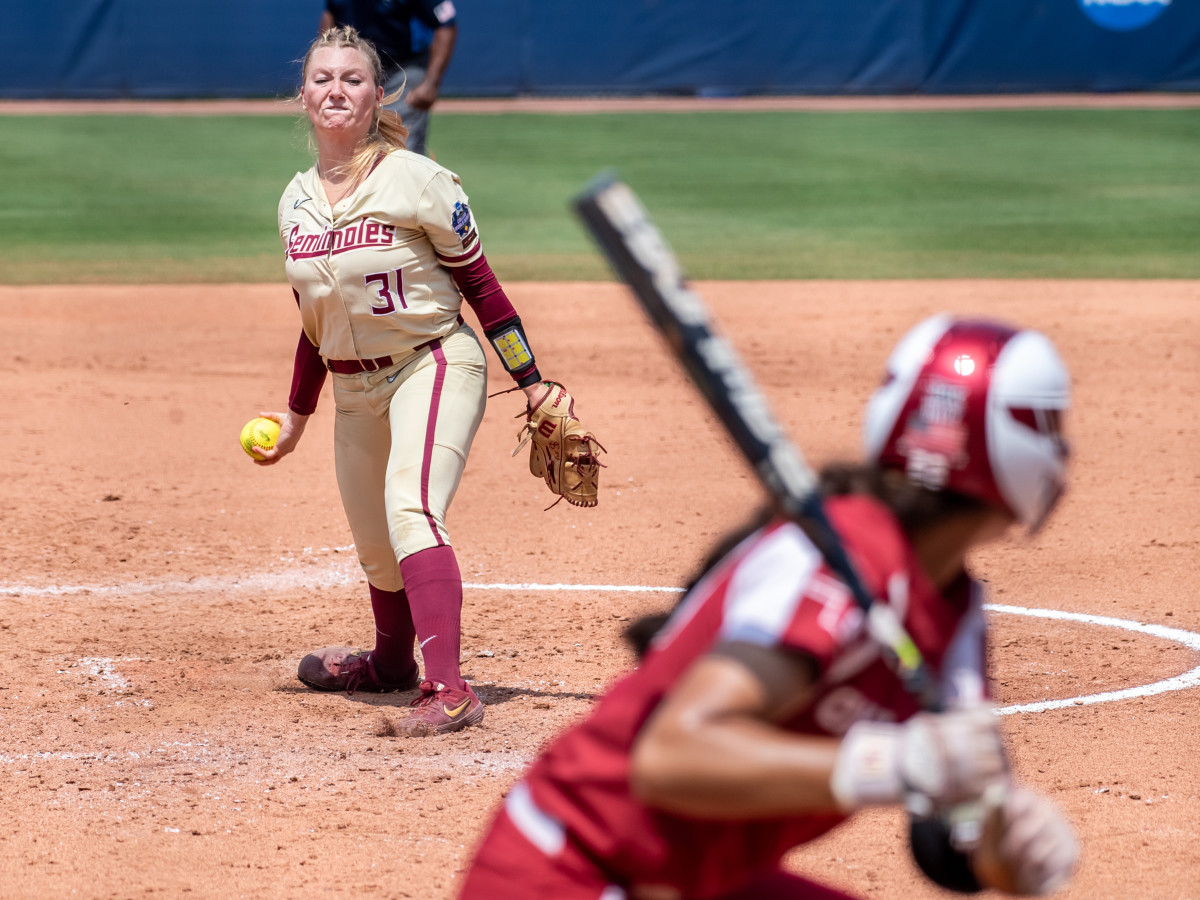Four Takeaways From the 2021 Women’s College World Series

Oklahoma won its fifth women’s College World Series title on Thursday, defeating Florida State twice in a best-of-three series. With each record broken and home run hit, captivated audiences across the country became indefatigable fans of college softball and advocates of instant replay.
When the final out was recorded—possibly the happiest and most electrifying span in college sports—WCWS gave way to the saddest and most monotonous span in college sports—all the days without the WCWS.
As ESPN play-by-play announcer Beth Mowins noted in Thursday’s final game, “There are those who love the game and those that just don’t know they love it yet.” Precisely—and both are patiently awaiting its return.
Here are four takeaways from the 2021 women’s College World Series:

James Madison University delivered the excitement
Talk of James Madison University and Odicci Alexander were inescapable throughout this year’s WCWS, and they deserved every minute of the spotlight. Two-way player Alexander captivated the nation in her four games in Oklahoma City, throwing 434 pitches in the span of four days and leading the Dukes to their first world series in program history. The two-time CAA player of the year finished her career at JMU with a 2.18 ERA and an 81–18 record on the mound, along with a .337 batting average.
Redshirt junior Logan Newton finished the tournament with the sixth-highest batting average at .364, and redshirt senior Madison Naujokas finished with the eighth-highest batting average at .333 (among players with at least 10 at bats). Redshirt senior Kate Gordon was tied for the second-most home runs in the tournament with three.
On June 7, its last day at the world series after suffering two heartbreaking losses to Oklahoma, JMU was searched on Google more than Kevin Durant, LeBron James and Devin Booker combined. They left Oklahoma City as the first unseeded team to win its first two games of the WCWS and inspired a new generation of fans.

Women coaches remain dominant
Since the 1980s, the number of women head coaches in NCAA Division I sports has steadily declined, but they’ve continued to dominate the college softball landscape.
For the fifth consecutive WCWS, both teams in the world series final had women head coaches, with Oklahoma head coach Patty Gasso collecting her third national championship title in the last five tournaments and Florida State head coach Lonni Alameda competing in her second WCWS finals in the last three.
Under Gasso’s leadership, Oklahoma became the first team to win six consecutive elimination games at the world series. Gasso’s .644 winning percentage at the world series is the third-highest of all time, and she has the second-most WCWS head coach wins (38).
Though they couldn’t finish the job, Alameda’s No. 10 seeded Seminoles knocked off the No. 11 Arizona Wildcats, the No. 5 Oklahoma State Cowgirls and the No. 3 Alabama Crimson Tide all within the span of three days.
Women accounted for five of the eight head coaches in the 2021 WCWS, 10 of the 16 in the NCAA D-I tournament super regionals and 43 of the 64 in the NCAA D-I tournament regionals.

Interest in softball is higher than ever, despite NCAA’s scheduling issues
The WCWS viewership has been on the rise for decades, and this year’s tournament continued that trend.
The 2021 WCWS shattered the previous viewership record and easily became the most-watched world series in history. The tournament drew an average of 1.20 million viewers per game, an increase of 10% from the previous world series, and the three-game final series averaged 1.84 million viewers per game, an increase of 15% from the last world series.
Excluding the NBA playoffs, the WCWS pulled in the two largest ESPN audiences since April’s NFL draft, with Game 1 attracting an average of 1.86 million viewers and Game 2 averaging 2.08 million viewers.
And yet, the mismanaged and poorly constructed schedule of the series belies its popularity.
The 2021 WCWS was originally scheduled across seven days from June 3 to 9, but it was stretched through June 10 because of a rain delay. The lengthened schedule gave the women’s teams eight days to play up to 17 games. In contrast, the men’s College World Series is scheduled from June 19 to 30, giving the men’s teams four more days to play up to 17 games.
In the men’s CWS, each team is guaranteed at least three rest days throughout the tournament and could have a maximum of six rest days depending on how many wins it racks up. In the WCWS, each of the eight teams received only one rest day this year, and several teams that entered the loser’s bracket early on were forced to play doubleheaders.
Oklahoma State and Florida State didn’t finish their WCWS elimination game until 2:00 a.m. on Sunday, June 6, after a rain delay pushed the start time to 11:50 the night before. After defeating OSU, the Seminoles had to be ready hours later to play Alabama in the semifinals.

The NCAA D-I tournament selection committee still needs work
The NCAA’s selection committee process has always been a bit nebulous, but the general rules for the 2020–21 postseason selection criteria required the selection committee to award 16 national seeds based on a team’s Rating Percentage Index (RPI) record against the top-150-ranked teams, average RPI win, average RPI loss and significant wins and losses, along with a few other criteria.
North Dakota State director of athletics Matt Larsen explained the process further on an episode of the James Crepea Show, saying this year’s seeding came down to “comparing probably 20–30 metrics” and “splitting hairs” because so many of the top softball teams were dominant and deserving of a national seed.
But the process is still far from perfect, and this year’s postseason confirmed that.
The SEC was heavily favored in the 2021 selection process, with 12 of 13 SEC teams making it into the 64-team postseason. Eight of those 12 teams were awarded a top-16 national seed, and five of those eight were awarded a top-eight national seed. But only two of those SEC teams—Alabama and Georgia—made it to this year’s WCWS, and neither of them made it to the finals. Teams like LSU and Missouri, with 19 and 15 losses, respectively, both received top-eight national seeds, while Washington (11 losses) received the 16 seed and Oregon (15 losses) was unseeded.
As always, this year’s national seeds were coveted by teams and coaches because they determined the locations of both regionals and super regionals. The 16 national-seeded teams hosted regionals on their own campuses (aside from Duke, who couldn’t host regionals due to COVID-19 restrictions), and the top eight seeds hosted the best-of-three super regionals.
But regardless of whether or not the selection committee can figure it out, the WCWS will continue to deliver some of the NCAA’s most exciting and admirable athletes. Only 51 weeks until the world gets to witness it all again.
More Softball Coverage:
• Meet Oklahoma Softball’s Smash Sisters
• James Madison Softball Is Running Through the Big 12's Best
• Welcome to the Grand Softball Experiment
